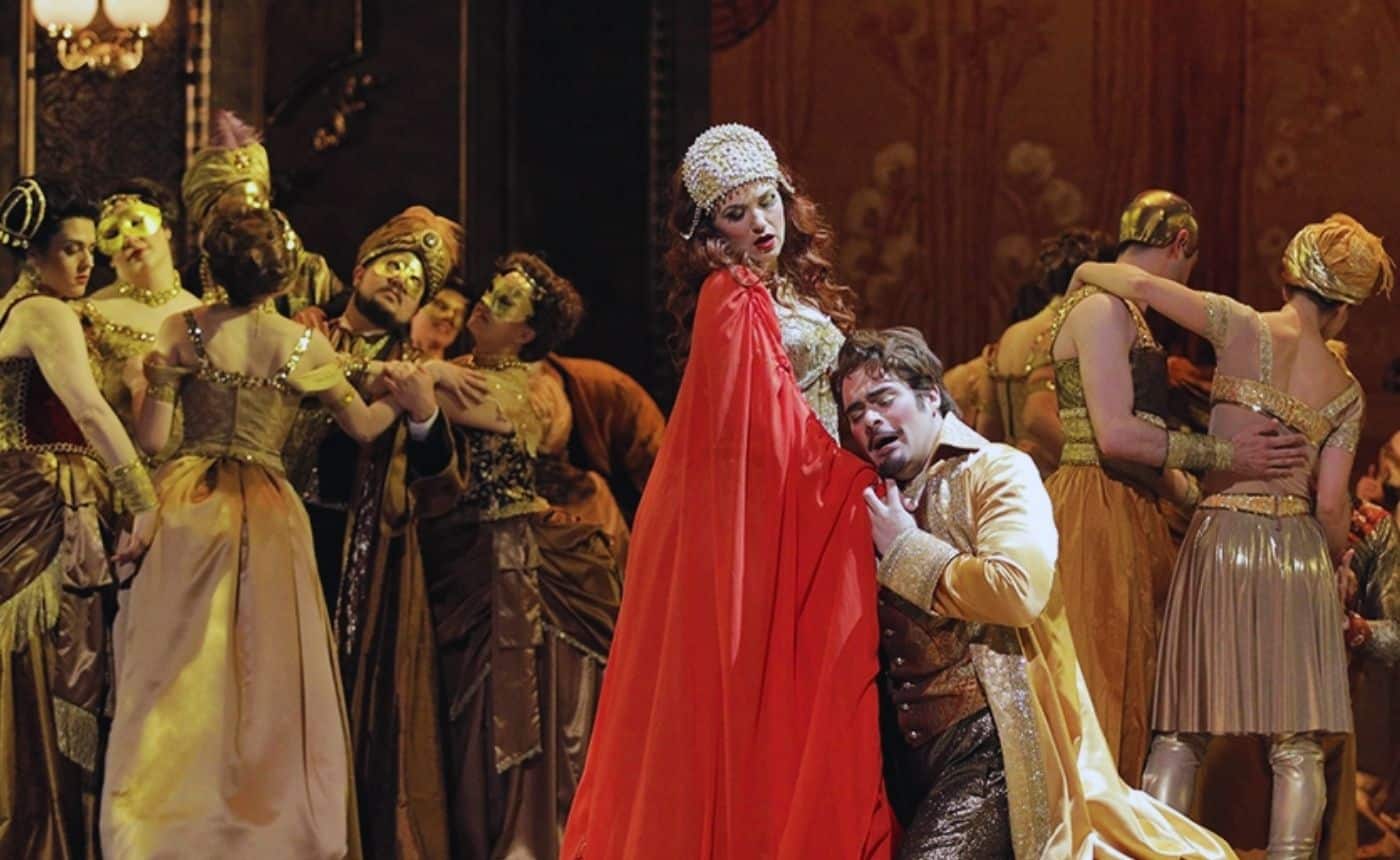The Merry Widow Lesson: Franz Lehár & Operetta
Franz Lehár was an Austro-Hungarian composer whose career was ultimately centered in Vienna. Music was something of a family business, as his father was also a military bandleader and composer of marches and dances. As a child Lehár studied the violin at the Prague Conservatory and took a position as a theatre violinist before being called up for military service in 1888 and joining a military band led by his father. Lehár quickly rose through the ranks and by 1890 was the bandmaster of an infantry regiment. In 1899 his position brought him to Vienna, and a few of his waltzes became popular there. In 1902 Lehár left the military and began composing for the theater, and he found success quickly composing for the operetta stage. Lehár was called to set the libretto of The Merry Widow in 1905 and it became an unprecedented hit in Vienna and abroad, ultimately ushering in a new period of international popularity for operetta.
Lehár’s musical output is considered by scholars to be of uncharacteristic depth and development for an operetta composer, especially as the genre had by Lehár’s day come to rely on a fairly predictable stable of stereotyped plots and standardized musical numbers. Musically, Lehár extended his harmonic vocabulary in response to the innovative ideas of Claude Debussy and Richard Strauss and he also began exploring more ambitious plots dealing with serious subjects. He did this while still including the waltzes and other social dances that the audience would demand, but as integral parts of the drama rather than diversions. The musicologist Andrew Lamb finds this originality to be particularly evident in The Merry Widow, noting several subtle ways in which Lehár uses the music to highlight aspects of particular characters. For example, the numerous modulations in the sole verse of Count Danilo’s entrance song “Da geh’ ich zu Maxim” serve to illustrate his capriciousness. Lamb also notes that Lehár was fortunate to be working at a time when operetta was in a bit of a slump following the deaths of the previous generation of star composers, and that the company of the Theater an der Wien was made up of relative newcomers. This situation gave Lehár a fairly unusual amount of freedom, allowing him to explore his own ideas rather than submitting to the whims of the stage talent.
After World War I, Lehár’s compositions became more ambitious but although he had some successes he failed to repeat the massive popularity of The Merry Widow. The arrival of new popular styles from America also seemed to indicate that Lehár’s proverbial 15 minutes was drawing to a close (although by then The Merry Widow had made him fantastically wealthy). Lehár managed to mount a second act, however, due to a new association with the popular tenor Richard Tauber. By the late 1920s, Lehár was spending most of his time revising his operettas and arranging film adaptations, and he composed a few original film scores as well. The ambitious Guiditta was his only entirely new work for the stage after 1928. In the mid-1930s Lehár founded his own publishing house and took over the rights of many of his works from their original publishers (with the notable exception of The Merry Widow). He remained in Vienna during World War II and managed to ride it out safely even though his wife was Jewish, due to the fact that The Merry Widow was a favorite of Adolf Hitler. Lehár remained apolitical and focused on his music during the war, even as some of his friends and collaborators died in concentration camps, a fact that created some suspicion around Lehár outside of Germany. However, keeping one’s head down could be considered as a survival tactic rather than a sign of collusion with the Nazi regime. After the war, Lehár’s health worsened and he ultimately died in the Austrian spa town of Bad Ischl in 1948.
© Ross Hagen





